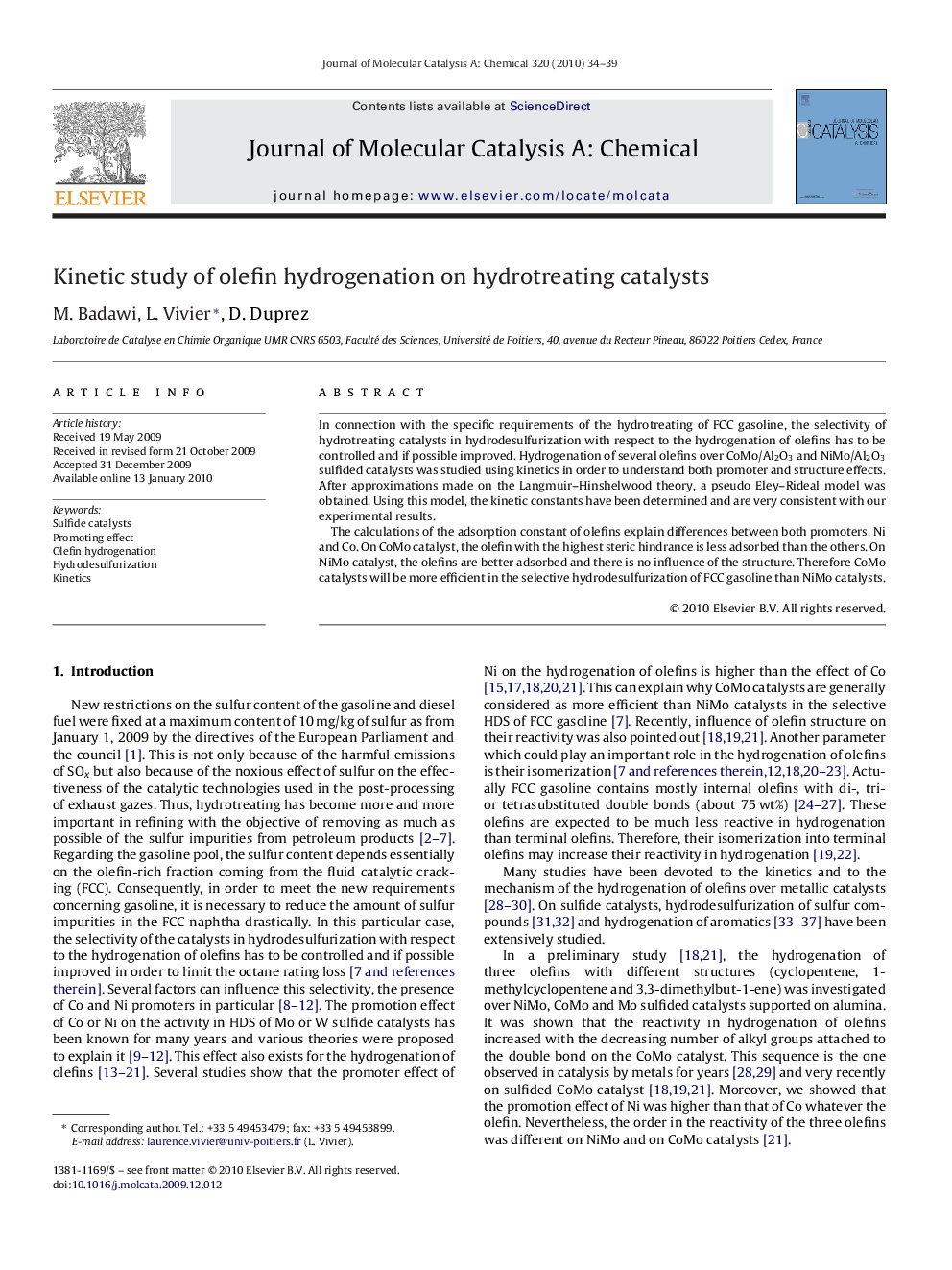| Article ID | Journal | Published Year | Pages | File Type |
|---|---|---|---|---|
| 66835 | Journal of Molecular Catalysis A: Chemical | 2010 | 6 Pages |
In connection with the specific requirements of the hydrotreating of FCC gasoline, the selectivity of hydrotreating catalysts in hydrodesulfurization with respect to the hydrogenation of olefins has to be controlled and if possible improved. Hydrogenation of several olefins over CoMo/Al2O3 and NiMo/Al2O3 sulfided catalysts was studied using kinetics in order to understand both promoter and structure effects. After approximations made on the Langmuir–Hinshelwood theory, a pseudo Eley–Rideal model was obtained. Using this model, the kinetic constants have been determined and are very consistent with our experimental results.The calculations of the adsorption constant of olefins explain differences between both promoters, Ni and Co. On CoMo catalyst, the olefin with the highest steric hindrance is less adsorbed than the others. On NiMo catalyst, the olefins are better adsorbed and there is no influence of the structure. Therefore CoMo catalysts will be more efficient in the selective hydrodesulfurization of FCC gasoline than NiMo catalysts.
Graphical abstractAfter approximations made on the Langmuir–Hinshelwood theory, a pseudo Eley–Rideal model was obtained for CoMo/Al2O3 and NiMo/Al2O3 sulfided catalysts and the kinetic constants have been determined from this law:Figure optionsDownload full-size imageDownload high-quality image (10 K)Download as PowerPoint slide
